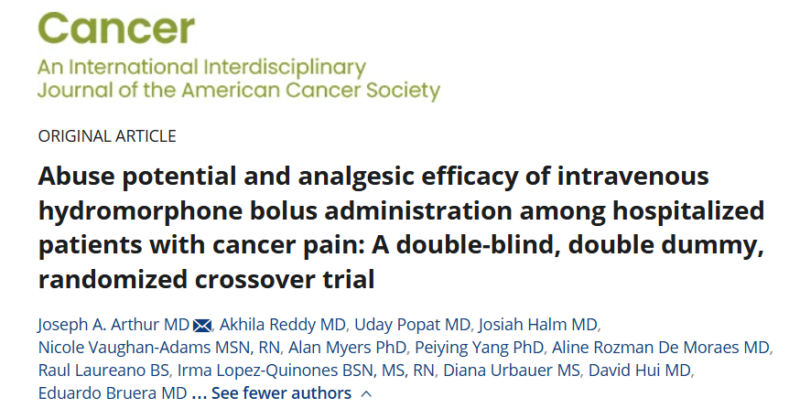ACS Journal Cancer shared an article led by Joseph A. Arthur on X about the risk of abuse and pain-relieving effectiveness of intravenous hydromorphone bolus injections.
Authors: Joseph A. Arthur, Akhila Reddy, Uday Popat, Josiah Halm, Nicole Vaughan-Adams, Alan Myers, Peiying Yang, Aline Rozman De Moraes, Raul Laureano, Irma Lopez-Quinones, Diana Urbauer, David Hui, Eduardo Bruera

